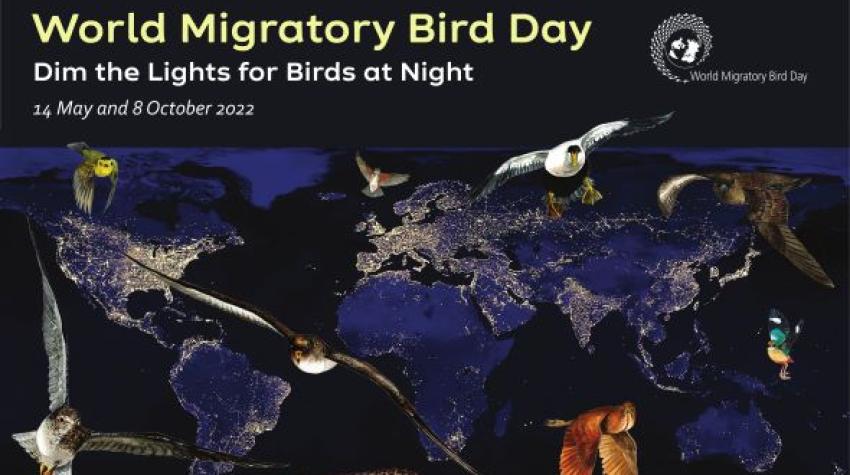The outdoor world is growing more and more illuminated with artificial light. More than 80 per cent of the world's population lives under a “lit sky”, and in Europe and North America the figure is closer to 99 per cent. Satellite monitoring found that from 2012 to 2016, artificially lit outdoor areas increased by 2.2 per cent per year.
The uses of artificial light range from safety and security to the lighting up of monuments and other attractions, for publicity and entertainment. But lighting can dramatically interfere with the natural environment and is altering and adversely impacting wild species of animals. When artificial lighting alters the natural patterns of light and dark in ecosystems, it is referred to as light pollution. Natural darkness has a conservation value in the same way as clean water, air and soil.
Light Pollution Impact on Migratory Birds
Every year, light pollution contributes to the death of millions of birds. Many migratory birds such as ducks, geese, sandpipers and songbirds of all kinds, as well as seabirds, especially those which migrate at night, are particularly exposed to the increase of light pollution. Long distance migrants, such as the blackpoll warbler (Setophaga striata), the Asian stubtail (Urosphena squameiceps) and the oriental plover (Charadrius veredus), may start and end their migrations in areas with relatively low levels of light pollution, but during migration they may fly over areas of intense urban development where they experience high levels of artificial light.
Artificial light at night can also impact the timing of migration and other seasonal behaviours because it can disrupt biological clocks. For example, birds may misinterpret artificial light at night as a longer period of daylight. Birds which are exposed to light pollution at their overwintering sites may head off on migration earlier than species which are not exposed to artificial light. Migration mistiming could be an issue if the necessary environmental conditions and resources are not available for birds during migration or upon arrival at their destination.
These unnatural light-induced behaviours can mean that migratory birds end up depleting their energy reserves, which puts them at risk of exhaustion, predation and lethal collision with buildings and other man-made infrastructure.

Growing International Focus on Light Pollution
The good news is that solutions to address light pollution are readily available. Many governments, cities, businesses and communities around the world have already taken measures that effectively reduce light pollution and its impacts.
A set of globally applicable guidelines are being finalized under the Convention on the Conservation of Migratory Species of Wild Animals (CMS) that will further assist these different actors to address this major source of pollution and help migratory species.
In 2020, the CMS Conference of the Parties already endorsed guidelines that include six general management principles to reduce light pollution, and technical guidance for addressing light pollution impacts on marine turtles, seabirds and migratory shorebirds.
The new light pollution guidelines will be relevant for all migratory species and will also include additional species-specific measures for landbirds and bats. The range of possible measures include shielding sources of artificial light to avoid light spillover; using non-reflective, dark-coloured surfaces; using lights with reduced or filtered harmful wavelengths; and using adaptive light controls to manage light timing, intensity and colour, just to mention a few. These will be presented to CMS Parties for adoption at the upcoming meeting of the CMS Conference of the Parties (CMS COP 14) due to take place next year in Uzbekistan.
World Migratory Bird Day – Dim the Lights for Birds at Night
Light pollution is the theme of this year’s World Migratory Bird Day (8 October 2022), a global campaign to raise awareness about migratory birds and major threats. Held under the slogan “Dim the Lights for Birds at Night!”, we are inviting concrete commitments and pledges from national and subnational governments and other key actors across the world to take steps to address the problem of light pollution. For more information and to find out how you can participate, please visit our website at: www.worldmigratorybirdday.org.
The UN Chronicle is not an official record. It is privileged to host senior United Nations officials as well as distinguished contributors from outside the United Nations system whose views are not necessarily those of the United Nations. Similarly, the boundaries and names shown, and the designations used, in maps or articles do not necessarily imply endorsement or acceptance by the United Nations.




